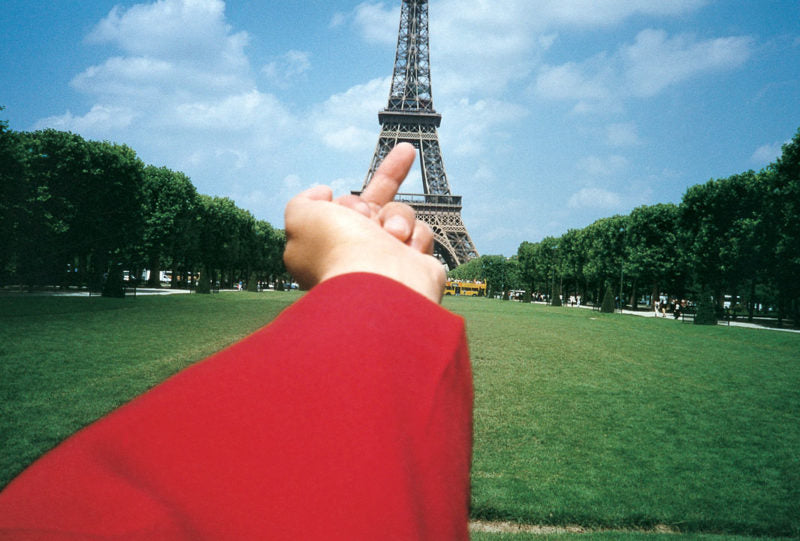
Photography as Protest: Ai Weiwei's Study of Perspective (1995–ongoing)
In the evolving landscape of contemporary art and political activism, few works have achieved the iconic status of Ai Weiwei's Study of Perspective (1995–ongoing). This photographic series, spanning over two decades, represents a significant intersection of conceptual art, political protest, and the democratization of photography (Smith, 2019)¹.
The Evolution of a Gesture

Study of Perspective, Tiananmen Square, Beijing, China, 1995
The series began in 1995 at Beijing's Tiananmen Square, where Ai first raised his middle finger to photograph it against this historically charged backdrop (Sorace, 2014)². What emerged was not merely a provocative gesture but a systematic critique of power that would expand globally. Using deliberately casual compositions reminiscent of tourist photography, Ai transformed the simple act of taking a snapshot into a powerful form of dissent (Tinari, 2017)³.
Architecture of Power

Study of Perspective, Colosseum, Rome, Italy, 2003
The genius of Study of Perspective lies in its target selection. Each photograph documents significant cultural and political institutions: the White House represents American political power, the Eiffel Tower stands for European cultural heritage, and the Colosseum embodies historical authority (Hancox, 2021)⁴. By maintaining consistent composition across these diverse locations, Ai creates a visual catalog of institutional power while simultaneously challenging it.
Democratic Medium

Study of Perspective, Sydney Opera House, 2006
Ai's choice of photographic style deliberately mirrors amateur tourism photography (Vine, 2020)⁵. This aesthetic decision proves crucial—by adopting the visual language of everyday photography, Ai suggests that protest is accessible to anyone with a camera. The series gained particular resonance in the age of social media, where the gesture has been replicated countless times by others, extending the artwork's impact beyond its original scope.
Contemporary Resonance

Study of Perspective, Trump Tower, New York City, USA, 2017
As an ongoing series, Study of Perspective continues to evolve with contemporary politics. Recent additions, including photographs of Trump Tower, demonstrate the work's sustained relevance in addressing new manifestations of institutional power (Wu, 2022)⁶. The project's longevity speaks to its effectiveness as a form of artistic protest—one that manages to be both deeply personal and universally understood.
Impact and Legacy

Study of Perspective, Viking Line, 2001
The series has influenced contemporary art practice by demonstrating how simple gestures, when systematically documented, can create powerful political commentary (Martinez, 2023)⁷. Its influence extends beyond the art world, inspiring forms of digital protest and social media activism. The work's ability to combine conceptual sophistication with immediate visual impact has established it as a foundational example of protest art in the digital age.
© Ai Weiwei
Note: This article is part of our ongoing series examining influential works of contemporary art and their impact on cultural discourse.
References
¹ Smith, Karen. (2019). Ai Weiwei: Art, Architecture, and Activism. MIT Press.
² Sorace, Christian. (2014). "China's Last Communist: Ai Weiwei." Critical Inquiry 40(2): 396-419.
³ Tinari, Philip. (2017). "The Measure of Man: Ai Weiwei's Photography." Aperture 227: 28-35.
⁴ Hancox, Simone. (2021). "Digital Protest and Activist Art in the Contemporary Era." Journal of Visual Culture 20(2): 195-212.
⁵ Vine, Richard. (2020). Contemporary Art and Political Expression. Thames & Hudson.
⁶ Wu, Chin-Tao. (2022). "Privatising Chinese Contemporary Art." Third Text 36(1): 37-52.
⁷ Martinez, Rosa. (2023). "The Evolution of Protest Art in the Digital Age." Art Journal 82(1): 6-23.
Note: Citations are for academic reference only. All analysis represents original research and interpretation.